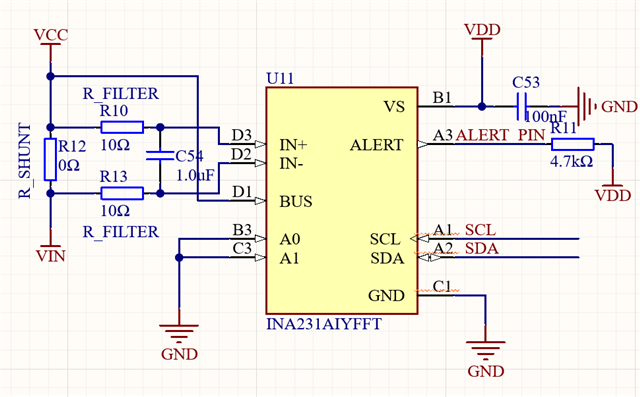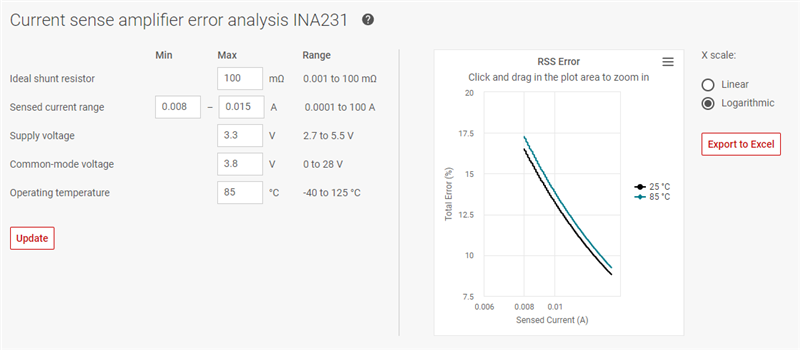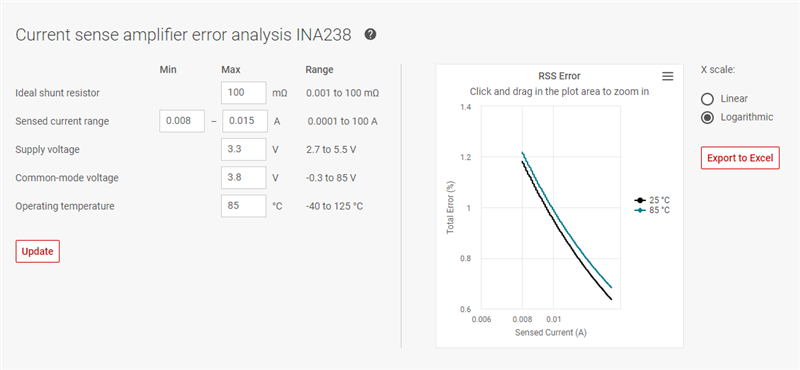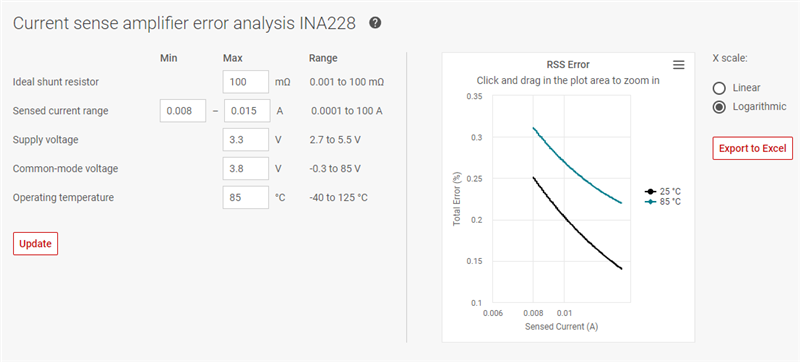Other Parts Discussed in Thread: INA238, INA228
Hi
I want to use INA231 in my project; considering this is the first time I have used this chip, I am not sure the circuit design is correct. Could you please check it and let me know if I missed anything or anything is incorrect?
VCC: 3.8V
VDD: 3.3V
VIN is connected to a power supply.
Thank you.
Best Regards,
Eric





